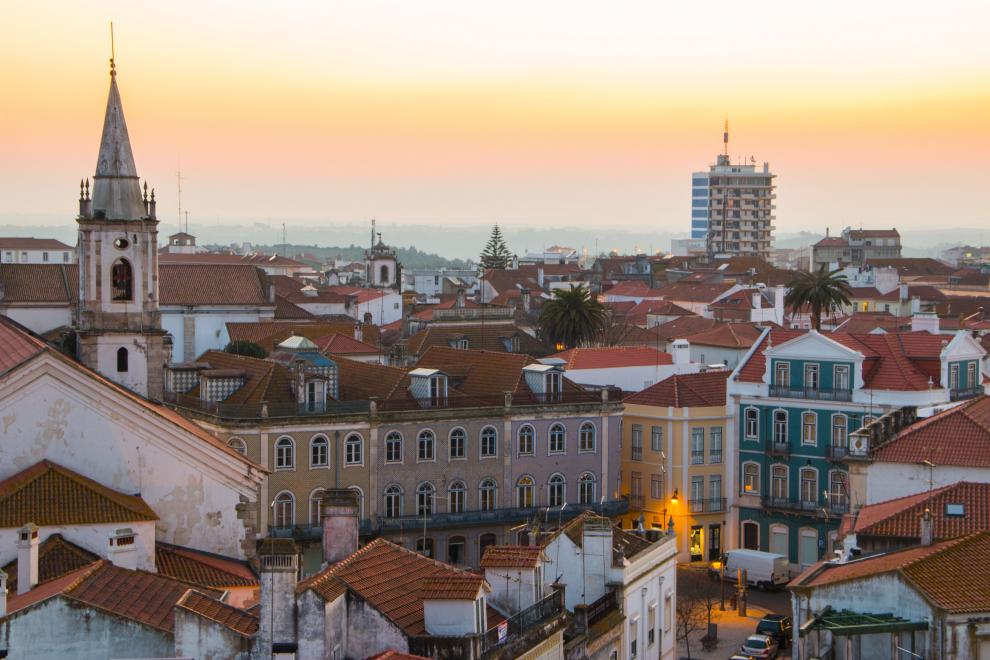Thessaloniki gets ready for its metro launch in November
The underground rapid transit lines have been under construction for almost two decades due to various project delays
 TheMayor.EU logo
TheMayor.EU logo 
The foundation of Santarém goes back to the Greco-Roman and Christian mythology, recognizing in the names of Habis and Irene its mythical origins. The earliest documented traces of human occupation date back to the 8th century BC. The local population would have collaborated with the Roman settlers, when they arrived in 138 BC and baptized the city Scallabis. During this period it became the main commercial warehouse of the middle Tagus and one of the most important administrative centers of the Lusitania province.
In the four centuries of Islamic occupation that followed, the city saw its military-strategic but also cultural and artistic role regenerated, усшг some of the most important poets and troubadours of the Arab world living here. King Afonso VI of Leon granted the city its first charter in 1095.
Reconquered in 1147 by D. Afonso Henriques, Portugal’s first King, Santarém received a new charter in 1179.
During the XIV and XV centuries, the palatial splendor of Santarém granted the City an important cultural reputation. The 1755 earthquake destroyed much of the village's most remarkable heritage, particularly churches and convents. In the context of the French Invasions and the Peninsular War, once again Santarém assumed a fundamental strategic-military role, but saw much of its most significant patrimony destroyed and stolen by the vandalism of the occupiers.
Like other walled cities, the Historic Center of Santarém consists of a web of narrow winding streets. Streets with unexpected lines and colors, alleys, arches, sidewalks and steps that adapt to the waviness of the plateau and the hillside. Through the city, porches and rosettes, arches and crevices, ogival decorative elements, Manueline windows, renaissance corners, escutcheons “Afonsinos” style, towers and domes, reveal to us an urban center in which civil and religious coexist and interact. The numerous and valuable examples of Gothic art granted the city the epithet "Capital of the Gothic". Here, the archaeologist, historian, artist or simple visitor will never cease to feel amazed.
Located in the north side of the Tagus River, historically Santarém is the Capital of the Ribatejo Region. Santarém is also the capital of a county divided in 18 parishes. It is also the head of the judicial district that bears its name. The municipality covers an area of 552, 5 sq. km served by the most important highways in the country. In 2014 the population of the city was 59.832 inhabitants.
Santarem’s region assumes a distinguishing role in the national and international context, which develops, in an intelligent and sustainable way, the areas where the region has undeniable advantage. This is a territory of national and international reference in the agro industrial sector that recognizes and develops its productive aptitudes and simultaneously diversifies emerging and regional activities. The existence of several structures of secondary/higher education and of research, allows the skills in specific areas of knowledge, linked to the specialization of the county, such as agriculture and livestock, but also an added value in terms of technical capital and human resources, highly qualified and capable of responding to challenges imposed by the business world.
The county's most distinctive economic activity is, indeed, agriculture. In fact, this sector is responsible for 4.3% of the gross value added of the companies (individual and collective) of the municipality, against 1.33% for the country, and 5.5% of employment, compared to 2.93% in the country.
The turnover of the county-based companies reaches amounts of 1 236 711 thousand euros, of which the agricultural sector reaches 99 368 thousand euros (8%). The Manufacturing Industries are responsible for 349,660 thousand euros (28.3%), whereas the Food Industries represent 31.2% of this value.

Framed by seven hills overlooking the Tagus River and the inner quarters, Santarém combines perfect natural and man-made beauty. Connected to major events in the Portuguese history, Santarem’s historic centre is testimony to its past artistic grandeur, which can be seen in the diversity and superior quality of its monuments. Major tourist attractions in the city are the Nossa Senhora da Graça Church (Our Lady of Grace), a gothic decorated reference in Portugal where the tomb of Brazil’s discoverer, Pedro Álvares Cabral stands, the building of the Municipal Market decorated with beautiful panels of tiles that depict the city’s monuments and scenes of rural life, the beautiful Garden of Portas do Sol, inside the ancient walls of the city, also a belvedere with an astonishing view over the Tagus river or the traditional conventual pastry that welcomes our visitors in a special way and honors Santarém’ gastronomic tradition.
The city is well known for its numerous events such as the National Fair of Agriculture/ Ribatejo Fair, the National Festival of Gastronomy, the City’s Festivities, the Festival Bike Portugal, and many other sport and leisure events throughout the year.
Adress: Praça do Município, 2005-245 Santarém